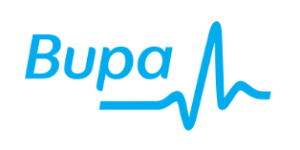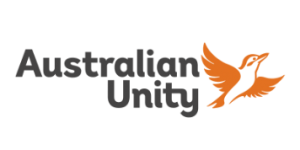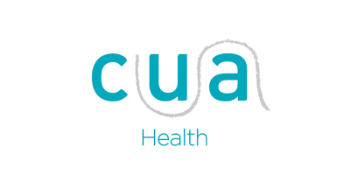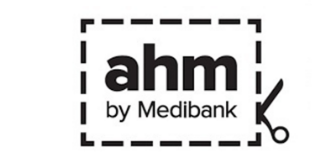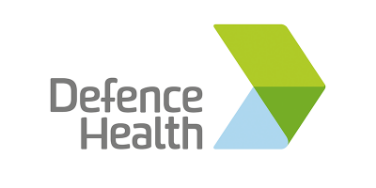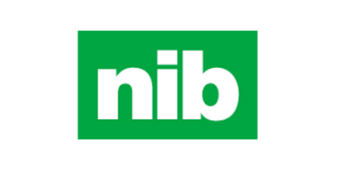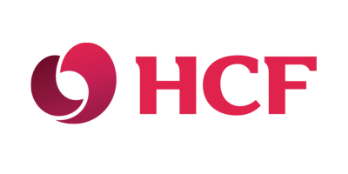This article is an interpretation of the scientific literature regarding myofascial pressure inversion cupping. It aims to guide you through the process of learning the following
- what myofascial cupping is,
- what you should avoid when looking for a cupping treatment,
- scientifically proven to benefit and the effects on the body,
- who can and should not receive cupping,
- what a cupping treatment with a Remedial Massage Therapist or Myotherapist may involve and
- a list of the most common FAQ’s asked on Google about cupping (using exact Google phrases – pardon the grammar).
Cupping Brisbane – What is Cupping?
Very few techniques in manual therapy, natural health and physiotherapy are more controversial than myofascial pressure inversion cupping. Because cupping has an ancient history, many claims regarding how cupping works and what it can do have not been substantiated by science. Knead Massage is not a Traditional Chinese Medicine (TCM) practice and we are not qualified to discuss the interaction between cups and acupuncture points.
What you should know:
Cupping therapy is a non regulated technique – meaning anyone can call themselves a therapist and use cups on an individual – this is why Massage and Myotherapy associations are pushing for legislation that makes our profession licensed. I personally would not receive cupping from anyone who does not hold a diploma or higher from a reputable training institution. Untrained or minimally qualified massage therapists spread many unsubstantiated claims about what cupping can do and we often witness marks that have lingered for weeks when people in pain finally book in for qualified solution to their pain.
What is cupping effective for?
The evidence base suggests that cupping has some temporary effects on muscle tension, such as neck and shoulder tension, muscle tension in the low back, sore legs and calves. Avoid practitioners that advertise fat loss and cellulite reduction – the evidence indicates an almost inconsequential amount of benefit. Cancer cannot be treated with cupping – avoid anyone who says it can.
How does cupping benefit the body?
A simplified analogy is like entering a code into a computer that has an effect on your house appliances – the cups are the code, they stimulate nerve endings in the skin, they send a message to the spine (and brainstem), which processes the signal and sends back chemicals that reduce pain and muscle tension.
According to the evidence base the benefits of cupping are fairly short lived – a few days at the most (once the neurotransmitters wear off the effect passes).
Experience the evidenced-based benefits of cupping!
Can everybody receive cupping treatments?
No. Some individuals should not receive cupping including:
- Individuals with blood clotting disorders such as haemophilia should never receive cupping.
- Age related change to the collagen of the skin means that a loss of elasticity in the derma is a normal part of aging. Individuals whose skin doesn’t snap back quickly to the pinch test (skin turgor test) should probably avoid cupping – especially the traditional fire cups which are fairly aggressive tension and not adjustable to a lesser pressure. Modern vacuum cups use a pump that allows the clinician to adjust the pressure fairly accurately.
- Individuals on blood thinning medications should probably avoid cupping – especially with non adjustable cups.
- There are recorded instances in the scientific literature of negative outcomes from individual with high blood pressure receiving cups around the neck and throat. High blood pressure is not inherently a no go for cupping, but the neck should be avoided in these areas.
- From a Western perspective there is no reason for pregnant individuals to avoid cupping performed according to evidence based principles.
How is a treatment conducted?
- At Knead Massage we practice according to evidence based principles. Cupping is not a stand-alone treatment and when the technique is used, it is ALWAYS used to allow your therapist to work on more than one area simultaneously (usually for a few minutes before serious deep tissue work starts on the area). We feel cups are best used to prepare an area for longer lasting benefits derived from massage techniques. For example when I use cups in a treatment – I would apply them for less than 7% (4-5min) of a one hour treatment. Cups would be applied to the shoulders for example while I worked on another area using another technique such as
- low level laser,
- deep tissue massage,
- stretching,
- dry needling
- thermotherapy
Oil is placed on the skin, the cups are applied to the oily area and a hand pump is used to remove air from the cup creating a seal on the oily skin and creating pressure. The stretch is perceived by the spine as a stimulus to send chemicals to the region that reduce pain and muscle tension. After softening the area in this fashion a therapist will apply any number of massage techniques to create a longer lasting adaptation in the tissue.
Related Posts
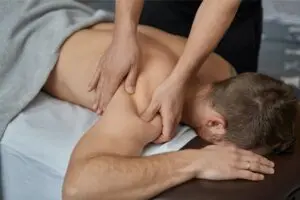
Deep Tissue Massage Brisbane

Sports Massage Brisbane

Taping for Pain
Frequently Asked Questions (FAQs)
Are cupping marks bruises?
Cupping marks are not bruises in the same sense as a mark that forms after an impact (known as a contusion). Cupping marks are primarily made up of a body fluid called interstitial fluid (which is largely located in the muscle tissue and lymphatic system). There is a small amount of blood in interstitial fluid. There are many non evidence based claims about cupping marks and the information it tells a practitioner.
Are cupping marks permanent?
As a result of its long history, a number of practices and beliefs without scientific basis have become entrenched in the application of cupping. Non evidence based clinicians often apply the cups for times in excess of those indicated by the scientific literature (4-10mins). If your therapist leaves cups on for longer than 10 minutes or if your marks take longer than 7 days to pass – the techniques being used are not evidence based. According to the scientific literature 4-6 minutes is all the time needed for a maximal cupping effect.
Are cupping marks dangerous?
If the skin has blistered, you have been subjected to a dangerous technique with reduced (or no) therapeutic value.
Cupping marks should not last more than a week at most – a qualified remedial massage therapist or myotherapist is unlikely to apply cups for longer than 5-6 minutes at a time (at a controlled pressure) that usually leaves a faint mark that disappears within two days. If you have a blood clotting disorder such as haemophilia, you should not use cupping. Blood thinning medication can extend the duration of cupping marks.
Are cupping bruises dangerous?
If the skin has blistered, you have been subjected to a harmful technique with reduced (or no) therapeutic value. If you have a blood clotting disorder such as haemophilia, you should not use cupping. Blood thinning medication can extend the duration of cupping marks.
As a result of its long history, a number of practices and beliefs without scientific basis have become entrenched in the application of cupping. Non evidence based clinicians often apply the cups for times in excess of those indicated by the scientific literature (4-10mins). If your therapist leaves cups on for longer than 10 minutes or if your marks take longer than 7 days to pass – the techniques being used are not evidence based. According to the scientific literature 4-6 minutes is all the time needed for a maximal cupping effect.
What are cupping marks?
Cupping marks are primarily made up of a body fluid called interstitial fluid (which is largely located in the muscle tissue and lymphatic system). There is a small amount of blood in interstitial fluid. There are many non evidence based claims about cupping marks and the information it tells a practitioner.
Can cupping cause blood clots?
In order for cupping to cause clotting the cups would have to be on for a long time – it is likely the skin would rupture before this. There are practitioners who utilise cupping for non validated purposes and make an array of false claims about what cupping can do. The majority of cupping’s measurable benefits occur within 3-4 minutes. If you are receiving cupping that lasts in one spot for more than 10 minutes, you are being subjected to a non-evidence based treatment that leaves unnecessary marking and may cause harm.
Can cupping cause cancer?
There are no scientific papers that purport a link between myofascial pressure inversion cupping and cancer.
Can cupping help with weight loss?
There are a few studies that support the claim of cellulite being shifted by cupping. The effect is NEGLIGABLE – similar to lymphatic massage. I would avoid any practitioner that claims that cupping will help you lose weight or radically shift cellulite – they are either uninformed (potentially dangerously so) or hoping to make a lot of money from you.
Can cupping make you tired?
There is some evidence to suggest that movement of interstitial and lymphatic fluids can cause the re-absorption of some metabolic waste products by the blood supply. Eliminating these substances feasibly can cause fatigue. It is likely that to experience this phenomenon the cups would have to be in place for an amount of time in excess of evidence based practice.
Can cupping help with cellulite?
There are a few studies that support the claim of cellulite being shifted by cupping. The effect is NEGLIGABLE – similar to lymphatic massage. I would avoid any practitioner that claims that cupping will help you lose weight or radically shift cellulite – they are either uninformed (potentially dangerously so) or hoping to make a lot of money from you.
Can cupping help sciatica?
Sciatica is a complex multi-faceted disorder. There are many sites of potential nerve impingement that cause the leg pain associated with sciatic nerve pain.
It is feasible that cupping may provide some relief to a form of sciatica known as piriformis syndrome – caused by a tightness muscle in the gluteal region close to where the sciatic nerve it exits the spine. In a percentage of people, the sciatic nerve can be compressed more readily by this muscle. There is evidence suggesting that cupping may be useful for temporarily reducing muscle tension – the application of the cups should not exceed a few minutes and should be reinforced by other manual therapy techniques such as massage.
Can cupping help with knee pain?
Cupping may provide temporary relief for some types of knee pain involving muscle tension and muscle overuse – the application of the cups should not take longer than a few minutes and should be reinforced by other manual therapy techniques such as massage. According to evidence based principals – cupping is not a stand-alone treatment and the reduction of muscle tension is not long lasting – however it may enable more long lasting manual therapy techniques such massage to be performed with less discomfort.
Can cupping delay your period?
False. This is an example of the many unsubstantiated claims made by non evidence based therapists and clinicians. Menstruation cycles are subject to complex hormonal processes that are not affected by pain modulating neurotransmitters triggered by cupping or the accumulation of interstitial fluid to the superficial derma.
What cupping therapy do?
What does cupping therapy do? The stretch caused by the cup suction stimulates small diameter nerve endings in the skin and muscles, which trigger impulses to the spinal cord – causing the release of pain modulating neurotransmitters (endorphins and monoamines) which block the pain messages and temporarily reduce muscle tone.
What cupping marks mean?
Circulatory status of the individual will affect the tone of the cupping mark – however, time under tension and pressure intensity affect the cup marks at least as much. As a result of its long history, a number of “diagnostic” practices and beliefs have become entrenched in the application of cupping which are not supported by the evidence base.
What cupping marks tell you?
If your cupping marks last more than a week (presuming you are not haemophiliac or on blood thinning medicine – haemophiliacs should not get cupping) the marks tell you that your therapist is not applying evidence based techniques – because they have left the cups on for too long. Circulatory status of the individual will affect the tone of the cupping mark – however, time under tension and pressure intensity affect the cup marks at least as much. As a result of its long history, a number of “diagnostic” practices and beliefs have become entrenched in the application of cupping which are not supported by the evidence base.
What cupping used for?
In evidence based practice, cupping is used to temporarily reduce tone in overactive, painful muscle tissue. The stretch caused by the cup suction stimulates small diameter nerve endings in the skin and muscles, which trigger impulses to the spinal cord – causing the release of pain modulating neurotransmitters (endorphins and monoamines) which block the pain messages and temporarily reduce muscle tone. An evidence based clinician that uses cups will not use them as a stand alone treatment. An evidence based clinician that uses cups will not apply the cups to one location for much longer than 5 minutes.
What's cupping do?
Cupping is used to temporarily reduce tone in overactive, painful muscle tissue. The stretch caused by the cup suction stimulates small diameter nerve endings in the skin and muscles, which trigger impulses to the spinal cord – causing the release of pain modulating neurotransmitters (endorphins and monoamines) which block the pain messages and temporarily reduce muscle tone. An evidence based clinician that uses cups will not use them as a stand alone treatment. An evidence based clinician that uses cups will not apply the cups to one location for much longer than 5 minutes.
When cupping goes wrong?
As a result of its long history, a number of practices and beliefs have become entrenched in the application of cupping, and which may have little or no scientific basis. If the skin has blistered – or your practitioner has cut you then applied the cup to “suck out toxins”, you have been subjected to a dangerous technique with no therapeutic value (literal medieval medical practice). Cupping marks should not last more than a week at most – a qualified remedial massage therapist or myotherapist is unlikely to use cups for longer than 5 minutes at a time and at a controlled pressure that usually leaves a faint mark that disappears within two days. If you have a blood clotting disorder such as haemophilia, you should not use cupping. Blood thinning medication can extend the duration of cupping marks.
When cupping how long?
A qualified remedial massage therapist or myotherapist who uses cups should not apply the cups for longer than 10 minutes. The evidence based effects of cupping should occur within 4 minutes. It is entirely feasible to effectively use cups without causing a mark.
When cupping leaves marks?
As a result of its long history, a number of practices and beliefs have become entrenched in the application of cupping, and which may have little or no scientific basis. If the skin has blistered – or your practitioner has cut you then applied the cup to “suck out toxins”, you have been subjected to a dangerous technique with no therapeutic value (literal medieval medical practice). Cupping marks should not last more than a week at most – a qualified remedial massage therapist or myotherapist is unlikely to use cups for longer than 5 minutes at a time and at a controlled pressure that usually leaves a faint mark that disappears within two days. If you have a blood clotting disorder such as haemophilia, you should not use cupping. Blood thinning medication can extend the duration of cupping marks.
When cupping hurts?
The stretch sensation of the cups is sometimes unpleasant, but a genuine sensation of pain is usually indicative of too much pressure or time.
When cupping causes blisters?
As a result of its long history, a number of practices and beliefs have become entrenched in the application of cupping, and which may have little or no scientific basis. If the skin has blistered – or your practitioner has cut you then applied the cup to “suck out toxins”, you have been subjected to a dangerous technique with no therapeutic value (literal medieval medical practice). Cupping marks should not last more than a week at most – a qualified remedial massage therapist or myotherapist is unlikely to use cups for longer than 5 minutes at a time and at a controlled pressure that usually leaves a faint mark that disappears within two days. If you have a blood clotting disorder such as haemophilia, you should not use cupping. Blood thinning medication can extend the duration of cupping marks.
Cupping when pregnant?
There is no scientific evidence to suggest that placing cups on appropriate locations, such as the low back, shoulders, glutes or legs is contra indicated during pregnancy. A pre natal condition called preeclampsia (high blood pressure) may theoretically mean that cupping of the neck region for those affected should be avoided as there is one adverse event (a single individual) recorded in the literature relating to a cerebral event after neck cupping.
Cupping when sick?
There is some evidence to suggest that movement of interstitial and lymphatic fluids can cause the re-absorption of some metabolic waste products by the blood supply. Eliminating these substances feasibly can cause fatigue and add to the immune systems burden. Cupping according to evidence based parameters – not leaving the cups on for an excessive time – should avoid this affect.
Cupping when you have a cold?
There is some evidence to suggest that movement of interstitial and lymphatic fluids can cause the re-absorption of some metabolic waste products by the blood supply. Eliminating these substances feasibly can cause fatigue and add to the immune systems burden. Cupping according to evidence based parameters – not leaving the cups on for an excessive time – should avoid this affect.
Where can cupping be done on the body?
An evidence based clinician will apply cups to broad muscle surfaces including the back and shoulders, glutes, legs and arms and the bottom of the foot. It is likely that cupping the neck and the sternocleidomastoid (muscle at the front of the throat) are safe in the vast majority of the population – especially if the cups are not left on for an excessive length of time.
Who does cupping therapy?
Cupping therapy is a non regulated technique. I personally would not receive cupping from anyone who does not hold a diploma or higher. Untrained or minimally qualified massage therapists are abundant in Brisbane and spread many unsubstantiated claims about what cupping can do and often leave marks that linger for weeks.
Who does cupping near me?
At Knead Massage Brisbane – our highly qualified Myotherapists and Remedial Massage therapists may employ cupping for some of the treatment. At Knead Massage, cupping is not a stand-alone treatment and when it is used, it is used to allow your therapist to work on more than one area simultaneously or for a few minutes before serious deep tissue work starts on an area. Our qualified, evidence based therapists will not cause marks that last more than a few days in healthy circulatory systems.
Will cupping help sciatica?
Sciatica is a complex multi-faceted disorder. There are many sites of potential nerve impingement that cause the leg pain associated with sciatic nerve pain.
It is feasible that cupping may provide some relief to a form of sciatica known as piriformis syndrome – caused by a tightness muscle in the gluteal region close to where the sciatic nerve it exits the spine. In a percentage of people, the sciatic nerve can be compressed more readily by this muscle. There is evidence suggesting that cupping may be useful for temporarily reducing muscle tension – the application of the cups should not exceed a few minutes and should be reinforced by other manual therapy techniques such as massage.
Will cupping help lower back pain?
Low back pain is a complex and multifaceted condition that is experienced differently by every individual. There is some evidence in the scientific literature that indicates cupping can provide some benefit when treating low back pain – the effects are likely to be short term and effective for muscular spasm causing low back pain. More complex conditions such as disc bulge and ankylosing spondylosis have no evidence to support the use of cups.
Will cupping get rid of cellulite?
There are a few studies that support the claim of cellulite being shifted by cupping. The effect is NEGLIGABLE – similar to lymphatic massage. I would avoid any practitioner that claims that cupping will help you lose weight or radically shift cellulite – they are either uninformed (potentially dangerously so) or hoping to make a lot of money from you.
Will cupping marks go away?
Yes, cupping marks should pass within 7 days. If you have been subjected to a non evidence based use of cups (or use blood thinning medications), it can take much longer. As a result of its long history, a number of practices and beliefs have become entrenched in the application of cupping which may have no scientific basis. When used by non evidence based clinicians, myofascial inversion pressure cups are often applied for too long – if your therapist leaves cups on for longer than 10 minutes and if your marks take longer than 7 days to pass – they are not using the technique in alignment with evidence based principals. According to the scientific literature 4-6 minutes is all the time needed for a maximul cupping effect.
Will cupping help shoulder pain
Yes – briefly. Shoulder pain can have many causes including simple muscle tension, arthritis, inflammatory conditions such as bursitis, tendon irritation and complex syndromes such as frozen shoulder. The stretch caused by the cup suction stimulates small diameter nerve endings in the skin and muscles, which triggers an impulse to the spinal cord causing the release of pain modulating neurotransmitters (endorphins and monoamines) which block the pain messages and theoretically reduce muscle tone. Simple shoulder tension may respond to cupping. There is no evidence to support the use of cupping in frozen shoulder.
Will cupping help rotator cuff?
The pain associated with the term Rotator cuff syndrome is usually a result of irritation of the tendon and bursar of the supraspinatus muscle (but may affect any of the 4 rotator cuff muscles). Cupping may be used to assist in a manual therapy approach to rotator cuff pain. The scientific literature tells us that rotator cuff syndrome responds best to a combination of early manual therapy and consistent exercise therapy. Consult a qualified Myotherapist to understand your rotator cuff pain quickly and how to resolve it. There is no evidence to support the ongoing use of cupping for calcific shoulder tendinitis.
Will cupping help me lose weight?
There are a few studies that support the claim of cellulite being shifted by cupping. The effect is NEGLIGABLE – similar to lymphatic massage. I would avoid any practitioner that claims that cupping will help you lose weight or radically shift cellulite – they are either uninformed (potentially dangerously so) or hoping to make a lot of money from you.
Will cupping therapy hurt?
The stretch sensation of the cups is sometimes unpleasant, but a genuine sensation of pain is usually indicative of too much pressure or time.
Where is cupping done?
An evidence based clinician will apply cups to broad muscle surfaces including the back and shoulders, glutes, legs and arms and the bottom of the foot. It is likely that cupping the neck and the sternocleidomastoid (muscle at the front of the throat) are safe in the vast majority of the population – especially if the cups are not left on for an excessive length of time (more than 10 minutes).
Who does cupping therapy near me?
At Knead Massage Brisbane – our highly qualified Myotherapists and Remedial Massage therapists may employ cupping for some of the treatment. At Knead Massage, cupping is not a stand-alone treatment and when it is used, it is used to allow your therapist to work on more than one area simultaneously or for a few minutes before serious deep tissue work starts on an area. Our qualified, evidence based therapists will not cause marks that last more than a few days in healthy circulatory systems.

Roger Morelli


Latest posts by Roger Morelli (see all)
- Lymphatic Drainage Massage Benefits - October 18th, 2024
- Lymphatic Compression Pump Therapy Brisbane - October 16th, 2024
- Lymphoedema Brisbane - October 14th, 2024


